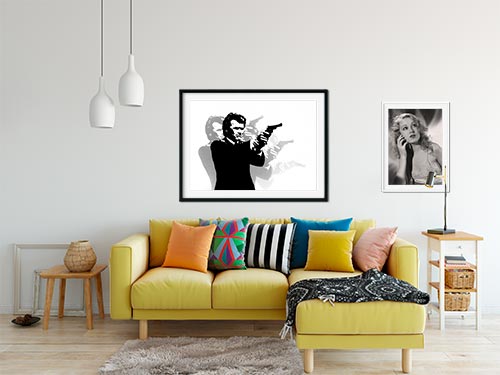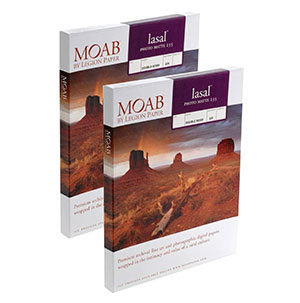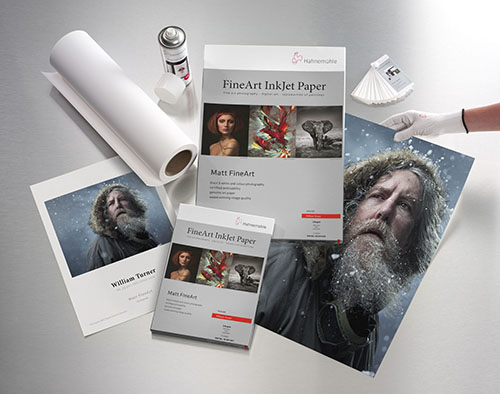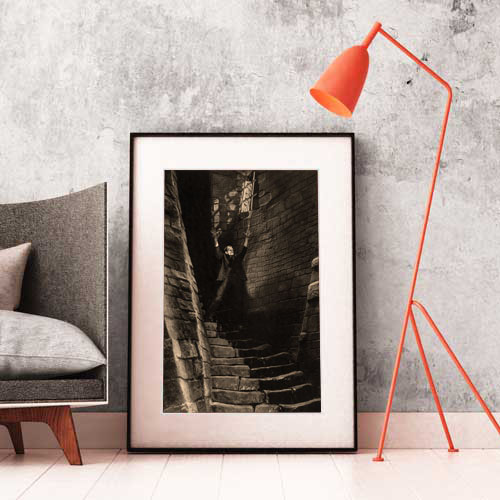Extremely rare 1973 theatrical publicity shot featuring Udo Kier (Baron Von Frankenstein) in his laboratory kissing Dalila Di Lazzaro (Female Monster) as Arno Juerging (Otto, The Baron's Assistant) observes closely. Srdjan Zelenovic ("Sacha", Male Monster) is facing her.
Flesh for Frankenstein is a 1973 horror film written and directed by Paul Morrissey. It stars Udo Kier, Joe Dallesandro, Monique van Vooren and Arno Juerging. Interiors were filmed at Cinecittà in Rome by a crew of Italian filmmakers. In West Germany and the United States, the film was released as Andy Warhol's Frankenstein (though only the title Frankenstein appeared on the print itself) and was presented in the Space-Vision 3D process in premiere engagements.
It was rated X by the MPAA due to its explicit sexuality, nudity and violence. In the 1970s, a 3-D version played in London and Stockholm. A 3-D version also played in Australia in 1986, along with Blood for Dracula. The gruesomeness of the action was intensified in the original release by the use of 3D. In 1973 Paul Morrissey and Joe Dallesandro came to Italy to shoot a film for producers Andrew Braunsberg and Carlo Ponti. The original idea came from director Roman Polanski, who had met Morrissey when promoting his film What?, with Morrissey stating that Polanski felt he would be "a natural person to make a 3-D film about Frankenstein. I thought it was the most absurd option I could imagine." Morrissey convinced Ponti to not just make one film during this period, but two, which led to the production of both Flesh for Frankenstein and Blood for Dracula.
The staff included many Italians in the production, including Enrico Job as the production designer, pianist Claudio Gizzi for the score and special effects artist Carlo Rambaldi for the special effects. Warhol's contributions to the film were minimal, including visiting the set once and briefly visiting during the editing period.At first, Morrissey intended to rely on improvisation for the dialogue for his characters, but had to come up with a new method, as this would not work for some actors, such as Udo Kier. This led to Morrissey preparing the dialogue day-by-day, dictating it to Pat Hackett at his studio.
Filming began on Flesh for Frankenstein on March 20th, 1973. Flesh for Frankenstein was shown in West Germany on 30 November 1973 as Andy Warhol's Frankenstein. It was later shown on April 2nd, 1974 at Filmex, the Los Angeles International Film Exposition. The film was submitted to Italian censors in January 1974 under the title Carne per Frankenstein, which was initially different from the American edit, containing some less explicit sex scenes and more violent death scenes. That version was initially banned in Italy, but an edited version was resubmitted under the title Il mostro è in tavola, barone... Frankenstein, with changes to dialogue as well as the addition and removal of various scenes, giving it an 89-minute running time for distribution by Gold Film.
Ian Jane of DVD Talk said of the film, "Flesh for Frankenstein is a morbid and grotesque comedy that won't be to everyone's taste but that does deliver some interesting humor and horror in that oddball way that Morrissey has."Bruce G. Hallenbeck commented in his book, Comedy-Horror Films: A Chronological History, 1914-2008, that Flesh for Frankenstein is perverse and distasteful, but in a way which is deliberately parodical and even a political statement. He remarked, "The irony inherent in the screenplay by Morrissey and Tonino Guerra ... gives the film a winking detachment, so that you find yourself convulsed with laughter during some of the goriest scenes ever filmed."
As of January 2018, the film held a 92% 'fresh' rating on movie review aggregator website Rotten Tomatoes. In 2012, Time Out polled authors, directors, actors and critics who had worked in the horror genre on their top horror films, with Flesh for Frankenstein placing at number 98 on the top 100.
Product Enquiry
Kodak Professional Endura Paper
Kodak Endura papers provide an incredible amount of detail and smooth transition of tones. Designed for the professional photographer in mind, looking for a more traditional photo print style, Kodak Endura provides an extended print life and color gamut almost at the level of a high end fine art paper print.
Archival Matte Paper
Archival Matte Paper, also known as Moab Lasal Photo Matte, is our house stock fine art paper and is an economical favorite for fine art reproductions and photo prints. It features a smooth surface, heavy weight (230 g, 9.5-mil), neutral white, matte paper engineered for accurate color reproduction that provides high contrast and high-resolution output. This paper is acid-free, making it the perfect choice for both photography & fine art reproductions.
Giclee William Turner Paper by Hahnemühle
The William Turner by Hahnemühle is one of the most popular papers used in the Giclee printing industry. This is a 310g natural white mould made natural line paper with 100% rag content making it highly archival. It has a slight coarse texture which gives photos and artwork an elegant look. These fine art paper prints (also known as Giclee) are ordered by galleries, individual artists and photographers. The papers and inks are not only archival but use some of the most accurate print technology for full color prints.
- Giclee prints use very expensive archival pigmented inks.
- Highest level of color gamut available in printing (12 color printing).
- Exceptional black & white printing.
- Fade resistant, pigmented inks which provide a superior color range compared to other types of inks. Widely preferred in fine art and photography circles.
- We ONLY use professional grade fine art and photo paper that resist yellowing and aging.



Framing
We offer wood and metal frames, custom cut & joined to order. Each framed print includes hanging hardware and foamcore backer.
Matting
We use conservation grade 100% virgin alpha-cellulose 2 ply mats with white core. Acid-free and lignin-free, these are both face resistant and meet all conservation quality standards set by the Fine Art Trade Guild. Mats are digitally cut for ultimate precision. The window will be 1/8″ smaller than the print dimensions.
Glazing (Acrylic Glass)
We offer custom cut panes of shatter-proof, acrylic glass, to protect your valuable artwork and prints.
Premium Clear
Framing grade clear acrylic is shatter resistant and lightweight.
Reflection Control
With its matte finish, Tru Vue Reflection Control® Acrylic scatters light to diminish unwanted glare.
Conservation Clear
Tru Vue Conservation Clear® Acrylic is a framing industry staple, blocking up to 99% of UV rays for ultimate protection.
Conservation Reflection Control
Tru Vue Conservation Reflection Control® Acrylic scatters and diffuses light to reduce unwanted glare. Blocks up to 99% of UV rays.







